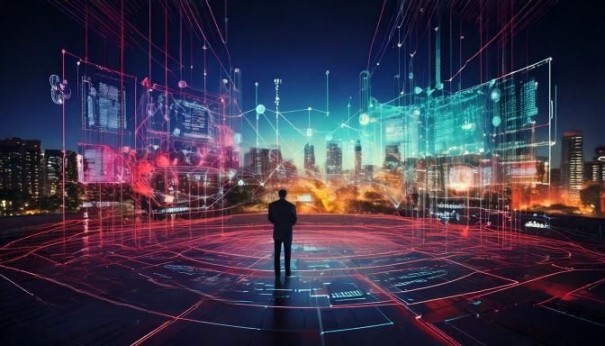As we approach 2025, the landscape of web development continues to evolve at a breakneck pace. Emerging technologies, changing user expectations, and new paradigms in software architecture are reshaping how we build and interact with the web. In this post, we\’ll explore the key trends that are set to define web development in 2025 and beyond.
1. AI-Driven Development
Artificial Intelligence is no longer just a buzzword; it\’s becoming an integral part of the web development process.
Key Developments:
- AI-Assisted Coding: Advanced code completion and generation tools will significantly speed up development time.
- Automated Testing and Debugging: AI algorithms will identify and fix bugs more efficiently than ever before.
- Personalized User Experiences: AI will enable websites to adapt in real-time to individual user preferences and behaviors.
2. WebAssembly (Wasm) Goes Mainstream
WebAssembly is set to revolutionize web performance, enabling near-native speed for web applications.
What to Expect:
- Complex Applications in the Browser: Games, video editing tools, and even 3D modeling software running smoothly in web browsers.
- Language Agnostic Web Development: Developers will have more freedom to choose programming languages for web projects.
- Improved Progressive Web Apps (PWAs): WebAssembly will enhance the capabilities and performance of PWAs, blurring the line between web and native apps.
3. The Rise of Jamstack and Headless Architectures
Decoupled architectures will continue to gain popularity, offering improved performance, scalability, and developer experience.
Key Trends:
- Expansion of Headless CMS Options: More robust and user-friendly headless CMS solutions will emerge.
- API-First Development: Building around APIs will become the norm, facilitating better integrations and microservices architectures.
- Edge Computing Integration: Jamstack sites will leverage edge computing for even faster content delivery and processing.
4. Web3 and Decentralized Applications (dApps)
The web is moving towards decentralization, with blockchain technology playing a crucial role.
What\’s Coming:
- Blockchain-Based Authentication: Decentralized identity management will enhance security and user privacy.
- Token-Gated Content: New monetization models will emerge, allowing creators to offer exclusive content to token holders.
- Decentralized Finance (DeFi) Integration: More websites will incorporate DeFi elements, from payments to complex financial services.
5. Advanced JavaScript Frameworks and Libraries
JavaScript will continue to dominate, with frameworks evolving to meet new challenges.
Emerging Trends:
- Island Architecture: Frameworks will offer more granular control over hydration and interactivity.
- Improved Server-Side Rendering (SSR): Enhanced SSR capabilities will boost initial load times and SEO performance.
- AI-Enhanced Frameworks: Integration of AI capabilities directly into popular frameworks for smarter, more adaptive applications.
6. Augmented and Virtual Reality on the Web
As AR and VR technologies mature, they\’ll become more prevalent in web experiences.
Developments to Watch:
- WebXR Advancements: The WebXR API will mature, making it easier to create immersive experiences directly in the browser.
- Virtual Shopping Experiences: E-commerce sites will increasingly offer virtual try-on and 3D product visualizations.
- AR-Enhanced Navigation: Real-world navigation through web apps will become more common, especially for location-based services.
7. Progressive Enhancement and Accessibility
With a growing emphasis on inclusivity, web development will focus more on accessibility and progressive enhancement.
Key Focus Areas:
- AI-Powered Accessibility Tools: Automated solutions will help developers create more inclusive websites.
- Advanced Voice Interfaces: Voice navigation and control will become more sophisticated and widely implemented.
- Adaptive Interfaces: Websites will automatically adjust their interfaces based on user abilities and preferences.
8. Green Web Development
Sustainability in web development will move from a niche concern to a mainstream priority.
Trends to Expect:
- Energy-Efficient Coding Practices: Developers will prioritize writing energy-efficient code to reduce carbon footprints.
- Green Hosting Solutions: More hosting providers will offer carbon-neutral or renewable energy-powered options.
- Sustainability Metrics: Tools for measuring and optimizing the environmental impact of websites will become standard.
9. Enhanced Security Measures
As cyber threats evolve, so too will the methods to combat them.
Upcoming Developments:
- AI-Driven Threat Detection: Machine learning algorithms will provide real-time protection against emerging security threats.
- Quantum-Resistant Cryptography: Preparation for the post-quantum era will lead to new encryption standards for the web.
- Biometric Authentication: More websites will incorporate advanced biometric authentication methods for enhanced security.
10. Low-Code and No-Code Platforms
The democratization of web development will continue with more powerful and flexible low-code solutions.
What\’s on the Horizon:
- AI-Powered Design Tools: Creating unique, responsive designs will become more accessible to non-designers.
- Visual Development for Complex Applications: Low-code platforms will extend beyond simple websites to support complex, data-driven applications.
- Integration with Professional Development Workflows: Better synergy between low-code platforms and traditional development environments.
Conclusion
The web development landscape of 2025 promises to be exciting, challenging, and full of opportunities. From AI-driven development to decentralized applications, the trends we\’ve explored will shape not just how we build for the web, but how we interact with it in our daily lives.
As developers, staying ahead of these trends will be crucial. It\’s not just about learning new technologies, but about understanding the broader implications of these changes on user experience, privacy, security, and the very nature of the web itself.
The future of web development is bright, diverse, and more accessible than ever. Whether you\’re a seasoned developer or just starting your journey, the coming years offer endless possibilities to create, innovate, and shape the digital world. Embrace these trends, stay curious, and get ready to be part of the exciting future of the web!
